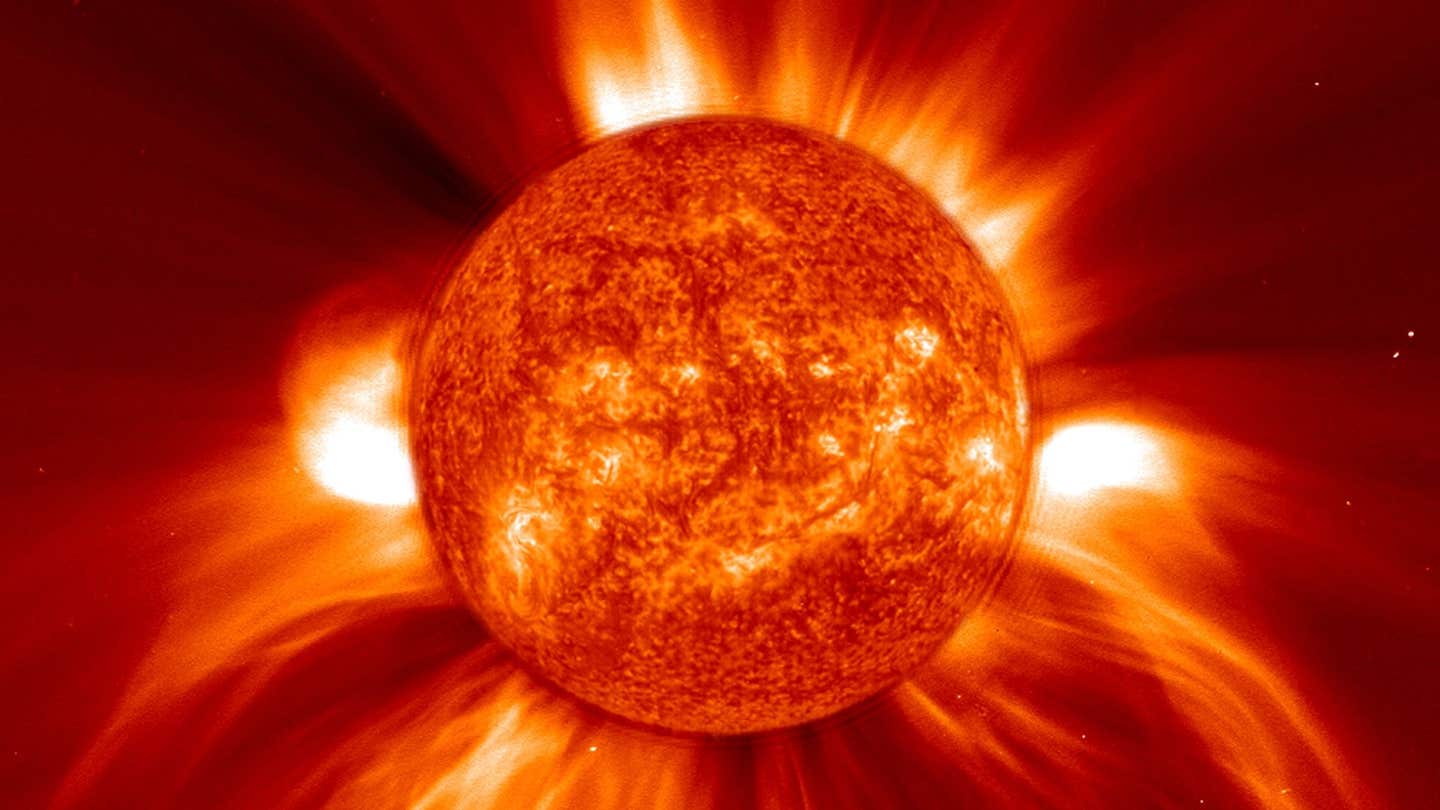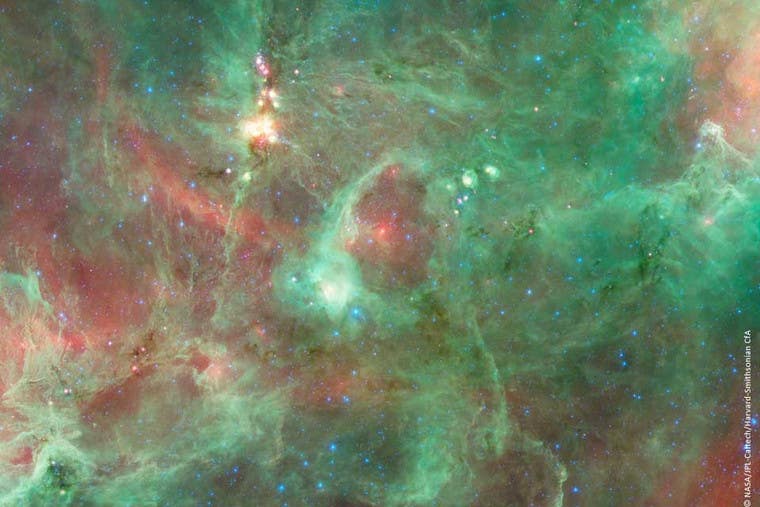New telescope technology reveals Sun’s corona in unmatched detail
Groundbreaking coronal adaptive optics unlocks the clearest images of the Sun’s outer atmosphere from Earth.

Groundbreaking coronal adaptive optics unlocks the clearest images of the Sun’s outer atmosphere from Earth. (CREDIT: CC BY-SA 4.0)
For decades, scientists have struggled to see the outermost layer of the Sun, called the corona, with enough detail to unlock its secrets. This region, which blazes at millions of degrees and throws out dramatic solar flares, remains a mystery despite years of study.
One major obstacle has been Earth's atmosphere. Like turbulence shaking an airplane, it blurs telescope images taken from the ground, hiding fine details in the Sun's outer layers. Now, researchers from the U.S. National Science Foundation, the National Solar Observatory, and the New Jersey Institute of Technology have changed that.
Published in the journal, Nature Astronomy, their new technology - called coronal adaptive optics - has produced the clearest, most detailed images and videos of the Sun's corona ever seen from Earth. The system, named Cona, is installed at the 1.6-meter Goode Solar Telescope at Big Bear Solar Observatory in California. It adjusts a mirror 2,200 times per second to cancel out the effects of Earth's turbulent air.
According to Dirk Schmidt, the lead developer and adaptive optics scientist at the National Solar Observatory, "The turbulence in the air severely degrades images of objects in space, like our Sun, seen through our telescopes. But we can correct for that."
First Glimpse of Stunning Solar Phenomena
Using Cona, the team captured detailed images and movies of stunning features in the corona. One video shows a solar prominence reshaping rapidly, with fine, turbulent flows visible inside. These prominences, bright looping structures of solar plasma, extend from the Sun's surface far into space. Another movie reveals the fast collapse of a thin stream of plasma, showing details never seen before. "It is super exciting to build an instrument that shows us the Sun like never before," says Schmidt.
The clearest look yet at coronal rain was also captured. This rain forms when hot plasma in the corona cools and falls back down to the Sun's surface. "Raindrops in the Sun's corona can be narrower than 20 kilometers," says astronomer Thomas Schad. These raindrops were shown in fine detail, revealing new information vital for improving models of how the corona works.
Another striking video shows a solar prominence being shaped and pulled by the Sun's magnetic fields. All these new images push beyond the previous limits of what scientists could observe. Vasyl Yurchyshyn, a research professor at NJIT, noted, "These are by far the most detailed observations of this kind, showing features not previously observed, and it’s not quite clear what they are."
Related Stories
Breaking a Barrier in Solar Astronomy
The Sun's corona has always posed a challenge. Though it is much hotter than the Sun's surface—reaching millions of degrees—scientists still don't fully understand how it gets that hot. Most of what is visible from Earth during a solar eclipse are glowing arches and loops of plasma. Until now, scientists had not been able to resolve the tiniest movements and structures in these features.
The problem? The Earth's atmosphere. Even the largest solar telescopes on the ground couldn’t see through the blurring effect known as "seeing." Adaptive optics helped improve images of the Sun’s surface starting in the late 1990s, but these systems only worked on features within the Sun's disk, not in the corona beyond its edge.
Coronal adaptive optics changes that. Cona uses a special wavefront sensor tuned to hydrogen-alpha light, where coronal plasma shines brightest. Unlike older sensors, which focused on the Sun's surface, this new one focuses directly on features in the corona. The system redirects half the incoming light to the sensor and the other half to scientific instruments. This makes it possible to stabilize and sharpen images of fast-moving coronal features.
"Adaptive optics is like a pumped-up autofocus and optical image stabilization in your smartphone camera, but correcting for the errors in the atmosphere rather than the user’s shaky hands," explains optical engineer Nicolas Gorceix.
The images now reach the theoretical diffraction limit of the Goode Solar Telescope: 63 kilometers. Before Cona, the best ground-based coronal observations were limited to a resolution of about 1,000 kilometers—a standard set over 80 years ago.
Opening the Door to New Discoveries
The clearer images are not just pretty to look at. They provide real science. One discovery involved a short-lived, twisted plasma structure called a plasmoid. On July 18, 2023, researchers observed this feature forming and breaking apart quickly after a failed solar flare eruption. This was a rare view of something that typically goes unnoticed.
The Sun's corona hosts many complex behaviors—twisting loops, falling rain, and erupting prominences. These events are powered by magnetism and plasma interactions.
Some scientists believe small-scale events like nanoflares, which release tiny bursts of energy, could be the missing piece in solving the mystery of the corona’s heat. But such events happen at extremely small scales.
Until now, models of the corona relied heavily on guesswork. Lab experiments and space telescopes hinted at certain processes, but even the best space-based cameras could not match the new images coming from Cona. Now, for the first time, ground-based telescopes can explore these small-scale processes directly.
The new system has already shown that cooled plasma in the corona displays structure all the way down to the telescope's limit, meaning even smaller scales may still be hidden. The research team also took Doppler data in helium and observed other wavelengths besides hydrogen, expanding the range of studies possible.
Looking Ahead
With this success, the team is already planning to expand the technology. They aim to apply it to the world’s largest solar telescope, the 4-meter Daniel K. Inouye Solar Telescope in Hawai‘i. This telescope, operated by the National Solar Observatory, will offer even finer detail thanks to its larger size.
Thomas Rimmele, the chief technologist at NSO who led the first adaptive optics for the Sun's surface, says, "The new coronal adaptive optics system closes this decades-old gap and delivers images of coronal features at 63 kilometers resolution."
Philip Goode, a co-author of the study and former director of the Big Bear Solar Observatory, sees an even bigger impact. "This transformative technology…is poised to reshape ground-based solar astronomy," he says. "With coronal adaptive optics now in operation, this marks the beginning of a new era in solar physics."
These improvements won’t just affect astronomy. Space weather can have real effects on life on Earth, from beautiful auroras to dangerous disruptions in GPS, communication satellites, and power grids. The better scientists understand the Sun’s corona, the better we can predict and prepare for these events.
The new observations made using Cona will also help improve and test computer models of how the Sun works. As these models get better, scientists can make more accurate forecasts of solar storms and other space weather events.
Unlocking the Sun's Atmosphere
The new coronal adaptive optics system at the Goode Solar Telescope is more than just a technical upgrade. It's a leap forward in understanding one of the most mysterious regions of our star. For the first time, ground-based scientists can look at the Sun’s corona with crystal clarity, capturing details that were once out of reach.
From fast-changing prominences to delicate coronal rain, each new image offers clues. Some may help solve the mystery of why the corona is so hot. Others may show how magnetic fields shape the Sun’s behavior or spark massive eruptions. All of them bring us closer to understanding our closest star and the powerful forces that affect Earth every day.
As the research continues, the possibilities for new discoveries are wide open. The future of solar astronomy is brighter, and clearer, than ever before.
Note: The article above provided above by The Brighter Side of News.
Like these kind of feel good stories? Get The Brighter Side of News' newsletter.



